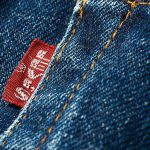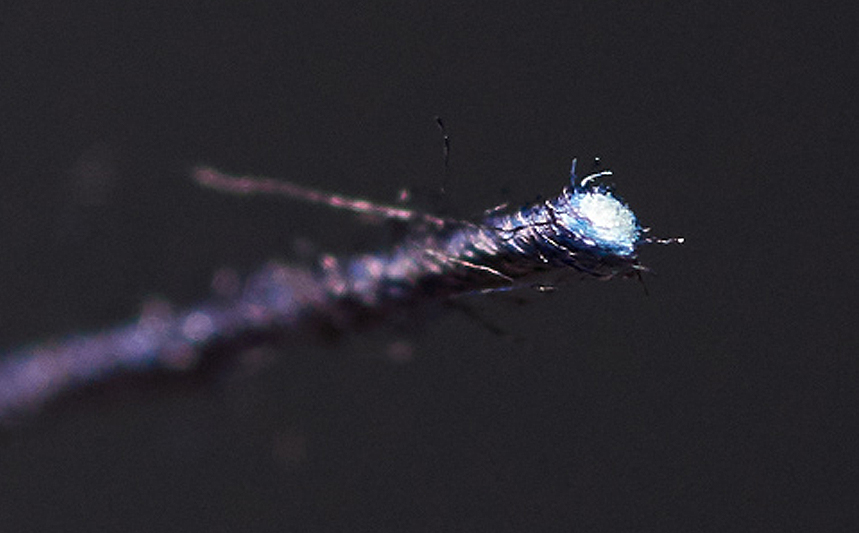
When it comes to fading, Japanese denim brands have a cult following in the denim market. Among the Japanese jeans specialists, WAREHOUSE is one of the most reputable labels for aging. The reputation comes from their unique production techniques that they developed through researching vintage garments.
One of the Osaka 5 has discovered that the most influential factor on fading is the white core of the warp yarns, which was unintentionally created in the old rope-dyeing technique. When this got combined with un-evenness of ring-spun yarns, vintage jeans made of them faded beautifully. This is a by-product for the undeveloped dyeing and spinning technology in the old days. As the techniques of dyeing have been dramatically improved, the core of the yarns are dyed properly in today’s process, and the denim made of them doesn’t fade well.
 The jeans from the 1940s with amazing sharp fades. Image via ware-house.co.jp.
The jeans from the 1940s with amazing sharp fades. Image via ware-house.co.jp.
To re-produce the aging like the vintage jeans, WAREHOUSE started off with researching the vintage jeans that have great fades. They cut open a warp thread taken from a pair of vintage Levi’s jeans from the 1940s, and found out that the surface of the yarn was dyed in indigo but the core remained white. This is due to the old rope dyeing technique back in the 1940s that could only dye the surface of it. They learned that the core being un-dyed was essential for aging.
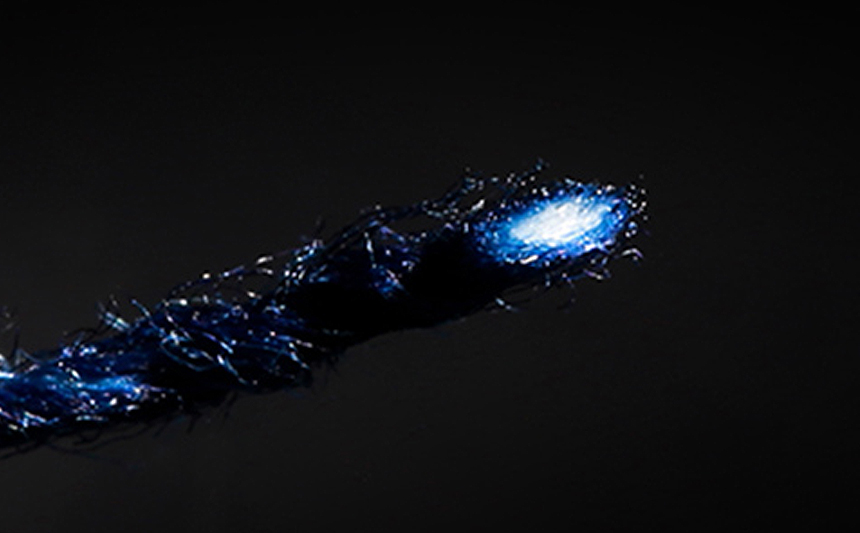 The cross-section of the yarn from the vintage jeans. Its core remains un-dyed. Image via ware-house.co.jp.
The cross-section of the yarn from the vintage jeans. Its core remains un-dyed. Image via ware-house.co.jp.
Next, WAREHOUSE worked to re-create yarns with their core un-dyed. In today’s rope dyeing technique, yarns are immersed in hot water prior to the dyeing in order to help the dye to penetrate into yarn core. The brand thought in reverse to use room-temperature water for this soaking process and has succeeded in remaining the core white exactly like the vintage threads.
 The yarn that WAREHOUSE has developed. As you can see its core remains white. Image via ware-house.co.jp.
The yarn that WAREHOUSE has developed. As you can see its core remains white. Image via ware-house.co.jp.
The special yarns are woven into denim by vintage G3 power looms that are the oldest currently looms in operation in Japan. Unlike the latest weaving machines, they can weave denim by maximizing the characteristics of the uneven ring-spun yarns. However, the down side is that the vintage looms are very time-consuming because they are not fully automatic like the new ones are.
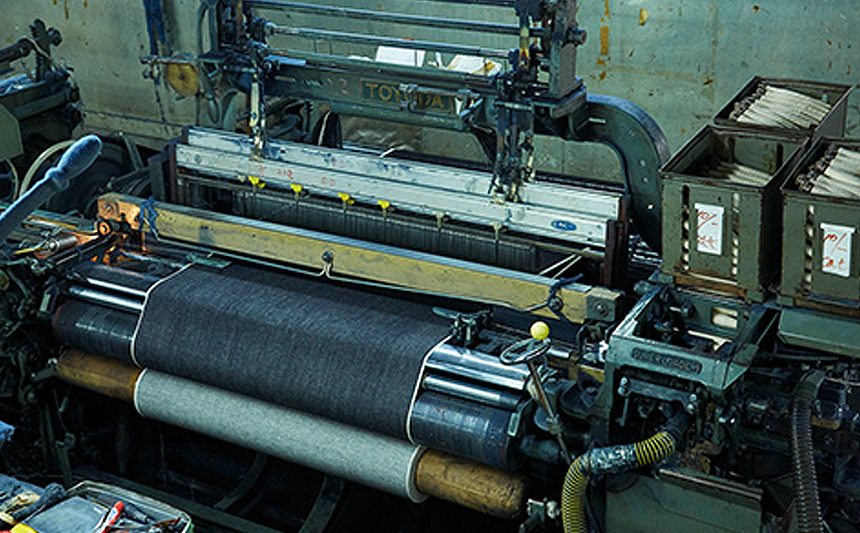 G3 power loom. Image via ware-house.co.jp.
G3 power loom. Image via ware-house.co.jp.
The denim woven by G3 is sewn into jeans using sewing machines that are customized in inches to give the jeans just the right vintage look and feel. Thanks to the use of the special yarn, the jeans get not only vertical fades but the same aging as the 40’s vintage jeans like whiskers and honeycombs and fades on the seams.
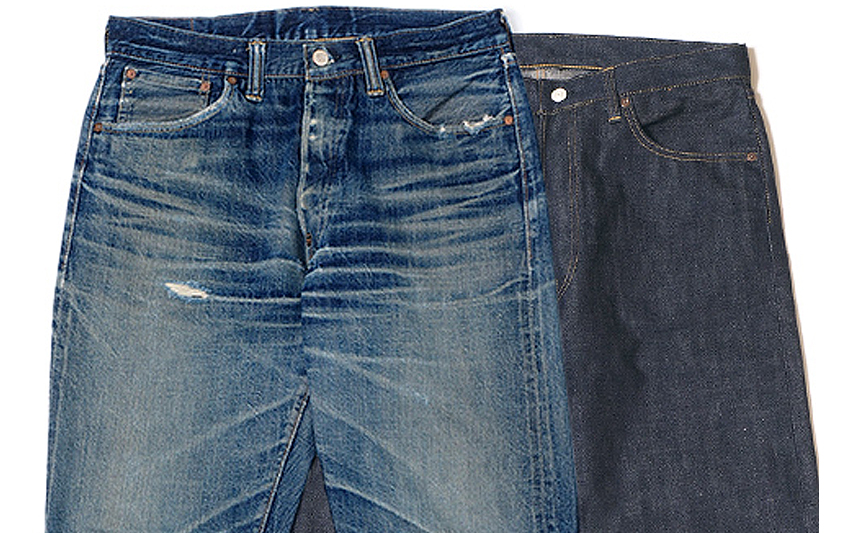 Left: WAREHOUSE’s aged jeans, Right: WAREHOUSE’s raw jeans. Image via ware-house.co.jp.
Left: WAREHOUSE’s aged jeans, Right: WAREHOUSE’s raw jeans. Image via ware-house.co.jp.
For those who are interested in WAREHOUSE denim products, we recommend you to start with Lot.1001xx that is the core and standard jeans of WAREHOUSE.
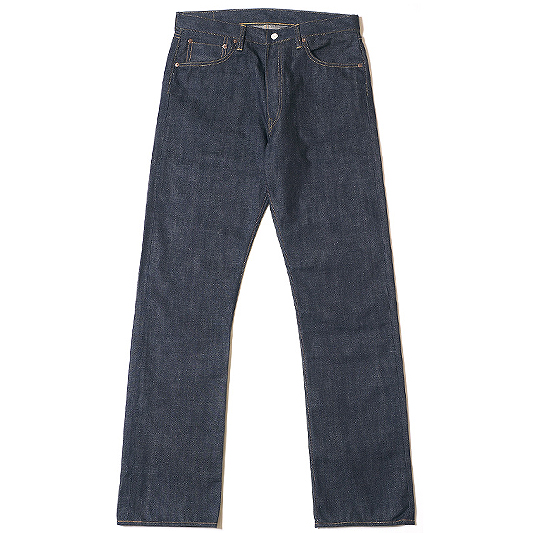 Image via ware-house.co.jp
Image via ware-house.co.jp
Lot.1001xx is inspired by LEVI’S 501 from 1947 which is also known as “XX” model. The jeans have a silhouette that is relaxed around the hips and thighs but then narrows slightly as it progresses down towards the cuffs. It will fade and reveal the white core. Available at Rakuten.

